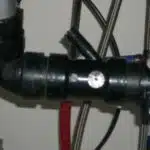When it comes to clogged sinks, most homeowners dread the task of unclogging it. However, with the right tools and techniques, this task can be simple and stress-free. In this article, we will discuss how using a handheld auger can effectively unclog your sink without causing any damage to your plumbing system.
A handheld auger, also known as a drain snake or plumbing snake, is a tool used by plumbers to clear clogs in pipes. It consists of a flexible cable with a hook on one end that is inserted into the drain. The cable is then twisted and pushed through the pipe until it reaches the blockage. By rotating the handle on the other end of the cable, the hook grabs onto the clog and pulls it out of the drain. This method is more effective than using chemical drain cleaners that can harm your pipes and cause further damage. In this article, we will provide step-by-step instructions on how to use a handheld auger to unclog your sink and restore proper drainage in your home.
Understanding The Causes Of Sink Clogs
Sink clogs are a common household problem that can cause inconvenience and frustration. Understanding the causes of sink clogs is crucial in preventing these issues. The most common culprits of sink clogs include hair, soap scum, food particles, grease, and mineral buildup. Prevention tips include using a drain strainer to catch debris, avoiding pouring grease down the drain, and running hot water through the pipes regularly.
DIY remedies can be effective in unclogging minor sink clogs. For example, pouring a mixture of baking soda and vinegar down the drain followed by hot water can break up and dissolve any blockages. Additionally, using a plunger or handheld auger can help dislodge any debris causing the clog. However, it is important to note that if these methods do not work or if there is a recurring issue with sink clogs, it may be necessary to call a professional plumber for assistance.
Identifying the type of clog in your sink is essential in determining the appropriate method for unclogging it. In the next section, we will discuss how to identify different types of sink clogs and provide solutions for each one. By understanding common causes of sink clogs and knowing how to prevent them as well as DIY remedies for minor issues, homeowners can save money on plumbing expenses while keeping their sinks functioning properly.
Identifying The Type Of Clog In Your Sink
Understanding the causes of sink clogs is a crucial first step to tackling the problem. Identifying the type of clog in your sink is equally important. There are several types of sink clogs, and each requires a different approach for effective unclogging.
The most common materials that cause sink clogs include hair, food particles, grease, soap scum, and mineral buildup. DIY remedies such as pouring boiling water or baking soda and vinegar down the drain may work for minor clogs caused by these materials. However, if the problem persists or worsens, it may be time to call a professional plumber.
When deciding whether to tackle a sink clog yourself or call in a professional plumber, it’s essential to consider your level of expertise and the severity of the clog. While minor clogs can typically be handled with DIY remedies or a handheld auger, more severe blockages may require specialized equipment and expertise. Knowing when to call in a professional plumber can save you time, money and prevent further damage to your plumbing system.
Determine the severity of the clog: Before using any tools or remedies to unclog your sink, determine how severe the blockage is. A minor blockage may only require boiling water or baking soda and vinegar treatment. However, severe blockages will require specialized equipment like motorized augers.
Understand your limitations: If you are not experienced in plumbing tasks or do not feel comfortable handling plumbing tools like handheld augers properly, it’s recommended that you call in a professional plumber rather than risk causing further damage.
Consider cost-effectiveness: Choosing between DIY remedies or calling in a professional plumber can depend on cost-effectiveness; simple problems can be fixed through DIY methods while complex ones should warrant hiring an expert.
When choosing the right handheld auger for your needs, there are several factors you should consider before making a purchase decision. These factors include cable length, cable diameter, handle type, and the auger’s power source. Selecting the right auger for your needs can make unclogging your sink easier and more effective.
Choosing The Right Handheld Auger For Your Needs
When it comes to unclogging your sink, using a handheld auger is one of the most effective solutions available. However, not all handheld augers are created equal. To ensure that you have the right tool for the job, it’s important to choose an auger that is appropriate for your needs.
One of the most important factors to consider is the size of the auger. Augers come in a variety of sizes, ranging from small, handheld models to larger, more industrial types. Choosing the right size will depend on a number of factors, including the size and type of clog you’re dealing with, as well as your own strength and physical abilities.
Another important consideration when choosing a handheld auger is maintenance. Like any tool, an auger requires regular care and upkeep in order to function properly over time. This may include things like lubricating moving parts or sharpening blades. By taking good care of your auger, you can help ensure that it remains functional for years to come.
As you prepare to use your newly selected handheld auger to unclog your sink, there are several steps you’ll need to take in order to get started. These may include things like removing any standing water from around the drain or clearing out debris from inside the sink itself. By following these steps carefully and methodically, you can help ensure that your unclogging efforts are successful and minimize any potential damage or mess along the way.
Preparing Your Sink For Unclogging
- To unclog your sink, you will need to gather the necessary supplies such as a handheld auger, gloves, towels, and a bucket.
- It is important to shut off the water supply to prevent any flooding.
- Once the water has been shut off, the drain cover must be removed to gain access to the sink.
- If the drain cover is a pop-up, it should be unscrewed and set aside.
- If the drain cover is a basket strainer, it should be unscrewed and removed.
- After the drain cover has been removed, you will be ready to use the handheld auger to unclog the sink.
Gather Supplies
When it comes to preparing your sink for unclogging, gathering the proper supplies is a crucial step. As a plumbing expert, I highly recommend choosing durable supplies that can withstand the force required for effective unclogging. This includes a handheld auger, which is an essential tool for removing any blockages in your pipes.
When selecting an auger, it’s important to keep in mind the proper handling of the tool. Always read and follow the manufacturer’s instructions carefully to avoid damaging your pipes or injuring yourself during use. Additionally, make sure you choose an auger with a length that fits your sink’s drain size and depth to ensure efficient removal of any clogs.
In conclusion, gathering durable supplies and properly handling your auger are key components in preparing your sink for unclogging. By following these guidelines, you can effectively remove any blockages and restore proper drainage to your sink without causing unnecessary damage or injury.
Shut Off Water
When dealing with a clogged sink, it’s important to take necessary precautions before attempting any repairs. One of the first steps you should take is turning off the water supply to your sink. This is essential to prevent any water from leaking out and causing further damage or flooding.
To turn off the water, you’ll need to locate the shut-off valve for your sink. This valve can typically be found under the sink or behind a nearby wall. Once you’ve located it, turn the valve clockwise until it’s completely closed. You may need to use pliers or a wrench if the valve is difficult to turn.
By turning off the water supply, you can effectively prevent any potential accidents or damage while working on your clogged sink. Remember to keep safety as your top priority when making any repairs in your home, especially those related to plumbing.
Remove Drain Cover
Removing obstacles is an essential part of proper drain maintenance. When it comes to unclogging a sink, removing the drain cover is often necessary to gain access to the clog. Before proceeding with this step, it’s important to ensure that you have all the necessary tools and take appropriate safety measures.
To remove the drain cover, you’ll need a screwdriver or pliers, depending on the type of cover your sink has. Begin by locating the screws or clips holding the cover in place. If there are screws, use your screwdriver to unscrew them in a counterclockwise direction. If there are clips, use your pliers to gently pry them open.
Once you’ve removed the drain cover, inspect it for any signs of damage or wear and tear. If necessary, clean it thoroughly before replacing it back onto the sink. By following these steps and taking care when removing obstacles like drain covers, you can effectively prepare your sink for unclogging and prevent further damage or issues from occurring.
Inserting The Auger Into The Drain
Allegory plays an essential role in our lives, as it helps us understand complex concepts by using simple metaphors. The same is true for unclogging a sink using a handheld auger. Think of the auger as a key that unlocks the blockage in your drain pipe, allowing water to flow freely once again. But just like a real key, you need to insert it correctly to ensure it works properly.
Proper technique is crucial when inserting the auger into the drain. Start by removing the stopper or strainer from your sink, and then insert the tip of the auger into the opening. Slowly turn the handle clockwise while applying gentle pressure until you feel resistance. This means that the cable has reached the clog.
Safety precautions are also important when using a handheld auger. Make sure to wear protective gloves and eyewear to avoid any injuries caused by debris or splashing water. Additionally, be careful not to force the auger too hard, as this could damage your pipes and make matters worse.
Markdown list:
- Remove stopper or strainer
- Insert tip of auger into opening
- Turn handle clockwise while applying gentle pressure
- Wear protective gloves and eyewear
- Do not force auger too hard
By following these proper techniques and safety precautions, you can successfully insert your handheld auger into your sink’s drain without causing any damage or injury. Next up is rotating the cable to break up the clog and restore proper drainage to your sink.
Rotating The Cable To Break Up The Clog
After inserting the auger into the drain, the next step is to rotate the cable to break up the clog. Before doing so, it is important to ensure that you have a good grip on the handle of the auger and that it is securely fastened. This will prevent any accidents or injuries while using it.
Techniques for effective rotation include turning the handle clockwise while applying gentle pressure downwards. If you encounter resistance, do not force the auger as this may cause damage to your pipes. Instead, rotate it in a back and forth motion until you feel it loosen up. Once you have successfully broken up the clog, slowly remove the auger from your drain.
Safety tips while using the auger are crucial in preventing any accidents or injuries. Always wear gloves and safety goggles to protect your hands and eyes from any debris that may come out of your sink. Additionally, keep children and pets away from your workspace to avoid any mishaps. Remember to never use chemical drain cleaners before or after using an auger as this may create hazardous fumes.
Advancing the auger through the pipe requires careful consideration of its length and size. Avoid pushing too much cable into your drain as this may cause further blockages down your pipeline. Instead, advance it slowly while rotating until you reach the source of the clog. With these techniques and safety tips in mind, you can easily unclog your sink with a handheld auger without causing any damage or harm.
Advancing The Auger Through The Pipe
- When using a handheld auger to unclog a sink, it is essential to take safety precautions.
- Begin by inserting the auger into the sink drain, using the tip of the auger to break up the clog.
- Once the auger is inserted, turn the handle of the auger to advance it further down the pipe.
- Be sure to turn the handle slowly and cautiously, as to not cause any damage to the pipe.
- Continue turning the handle until the auger has advanced as far as possible.
- Once the auger has reached the end, begin to pull the auger out of the pipe in order to remove the clog.
Safety Precautions
The safety of homeowners should always be a top priority when it comes to fixing plumbing issues. Unclogging your sink using a handheld auger can be hazardous without proper equipment and protective gear. As a plumbing expert, I highly advise individuals to wear gloves and safety glasses before attempting this task.
Proper equipment is also crucial in ensuring the safety of the individual doing the job. A handheld auger with a long cable is required to reach deep clogs in pipes. It is essential to choose an auger that fits the size of your sink’s drain pipe to avoid damaging the pipe further. Additionally, ensure that the auger’s handle has a secure grip because slipping could cause injuries.
In conclusion, it is essential to prioritize safety while unclogging your sink with a handheld auger. Protective gear such as gloves and safety glasses must be worn, and proper equipment must be used to prevent any potential hazards or injuries. Remembering these precautions can help you successfully complete the task without any accidents or damage to your property.
Inserting The Auger
Inserting the auger into the drain pipe is a crucial step in unclogging your sink using a handheld auger. Before doing so, it is essential to turn off the water supply and remove any standing water from the sink. To insert the auger, you must first remove the stopper or strainer from your sink’s drain. Then, slowly feed the cable into the drain while turning the handle clockwise to advance it through the pipe.
Regular maintenance of your auger ensures that it works effectively when needed. Before using it, inspect the cable for any damages or kinks that may hinder its performance. Additionally, clean and lubricate your auger regularly to prevent rust and ensure that its mechanisms work smoothly. Troubleshooting techniques such as rotating the cable back and forth or pulling it out slightly can help dislodge any debris stuck in your pipes.
As you insert and advance your auger through the pipe, be sure not to force it too hard down the drain as this could cause damage to your plumbing system. Take your time and rotate it gently until you feel resistance from any blockages inside. Once you have reached a clog, turn the handle counterclockwise to break up any debris before pulling out both the auger and debris from your sink’s drain.
Turning The Auger
Proper technique when using a handheld auger is crucial in ensuring that your sink’s drain is cleared of any blockages. Advancing the auger through the pipe requires patience and precision to prevent damage to your plumbing system. After inserting the auger into the drain, it is essential to turn the handle clockwise while gently pushing it forward.
One common mistake people make when using an auger is forcing it down the drain too hard. This can cause damage to your pipes and worsen the clog. Instead, take your time and rotate the cable gently until you feel resistance from any debris inside. Once you have reached a blockage, turn the handle counterclockwise to break up any debris before pulling out both the auger and debris from your sink’s drain.
Turning the auger clockwise helps advance it through the pipe, while turning it counterclockwise breaks up any blockages in its path. As you turn the handle, be sure not to pull on it too hard as this could cause kinks in the cable or even break its mechanisms. Remember to use proper technique when handling your auger and be patient in feeding it slowly but steadily through your sink’s drain until you feel resistance from any blockages inside.
Feeling For Resistance And Adjusting The Cable
As you insert the cable into the sink, you may feel resistance from the clog. This resistance is an indication that you have reached the blockage and need to adjust the tension on the auger cable. Adjusting tension on the cable can help avoid any damage to your pipes.
To adjust tension, turn the handle of the auger counterclockwise while pushing down on it at the same time. This will cause a slight bend in the cable, allowing it to hook onto any debris and pull it out.
It is important to avoid using too much force when adjusting tension as this can cause damage to your plumbing system. You should also be careful not to twist or kink the auger cable, as this can lead to it getting stuck in your pipes.
- Use a flashlight to see what you are doing.
- Wear gloves to protect your hands from debris and bacteria.
- Avoid using chemical drain cleaners before using an auger as they can be harmful if they come into contact with skin or eyes.
- Always dispose of any debris properly after removing it from your sink.
With proper technique and care, adjusting tension on an auger cable is a simple task that can help unclog your sink quickly and efficiently. Once you have adjusted tension, you can move on to hooking onto the clog and pulling it out.
Hooking The Clog And Pulling It Out
To hook the clog, insert the auger into the drain and turn it clockwise until you feel resistance. This usually indicates that you have reached the clog. At this point, continue turning the auger clockwise while applying gentle pressure to hook onto the clog. Once you feel that you have hooked onto it, slowly pull out the auger while continuing to turn it. The clog should come out with it.
It is important to take safety precautions when using a handheld auger. Always wear gloves and protective eyewear to prevent injury from debris or splashing water. Additionally, make sure to use the auger as directed and avoid excessive force or twisting motions that may damage your pipes.
Alternative methods for unclogging your sink include using baking soda and vinegar or a plunger. However, these methods may not be effective for more severe clogs and could potentially cause damage if done incorrectly. If you are uncertain about how to proceed, it is best to consult a professional plumber for assistance.
As you remove the auger from the drain, be sure to check for remaining debris that may have been dislodged by your efforts. Use a flashlight if necessary to thoroughly inspect the drain and ensure that all debris has been removed before proceeding with further use of your sink.
Checking For Remaining Debris
Once you have finished removing the clog from your sink with a handheld auger, it is important to check for leftover debris. This step ensures that your plumbing system will continue to function properly and remain unclogged. To do this, turn on the faucet and let water run through the drain while observing its flow. If the water drains properly without any hesitation or backup, then you have successfully removed the clog.
However, if you notice that there is still some debris left in the drain, use a pair of pliers or gloves to remove it carefully. It is important to handle this debris with care as it may contain harmful bacteria or sharp objects that could cause injury. Once all debris has been removed, dispose of it properly in a trash bag and seal it tightly to prevent any unwanted odors or mess.
Proper disposal of removed clogs is crucial to avoid further problems down the line. Never dispose of these materials down the drain as they can cause additional blockages and damage to your plumbing system. Instead, place them in a secure trash bag and throw them away in your designated waste management area. By following these steps, you can ensure that your sink remains functioning optimally for years to come.
As mentioned earlier, checking for leftover debris is an important step in keeping your sink unclogged. Once all debris has been removed and disposed of properly, the next step is flushing the drain with hot water. This will help eliminate any remaining residue and ensure proper drainage flow.
Flushing The Drain With Hot Water
After ensuring that there is no remaining debris in the sink, it’s time to flush the drain with hot water. This step is necessary to remove any lingering clogs or buildup in the pipes. Hot water has many benefits when it comes to unclogging drains. Firstly, it helps dissolve grease and soap scum that may be causing the clog. Secondly, hot water can loosen up any stubborn debris that may be stuck in the pipes.
If you don’t have access to hot water, there are alternatives you can use. For instance, you can try using a mixture of baking soda and vinegar. Baking soda is an excellent cleaning agent while vinegar helps dissolve any buildup in the pipes. Mix equal parts of baking soda and vinegar and pour it down the drain. Let this mixture sit for about 20 minutes before flushing it out with cold water.
Once you’ve flushed the drain with hot water or an alternative solution, test your sink for proper drainage by running some cold water through it. If the water flows freely down the drain without any gurgling sounds or slow draining, then congratulations! You’ve successfully unclogged your sink using a handheld auger. Keep in mind that regular maintenance of your sink can prevent future clogs from occurring, so make sure to clean it regularly to avoid having to go through this process again anytime soon.
Testing Your Sink For Proper Drainage
- Testing the water level in your sink is an important step in determining the efficacy of the drainage system.
- An excess of water in the sink bowl can indicate a blockage in the system that needs to be cleared.
- A handheld auger can be used to identify the source and extent of the blockage.
- After the blockage is removed, the water should be tested again to ensure that the system is working properly.
Testing Water Level
Before you start to unclog your sink using a handheld auger, it is important to test the water level. Measuring water can be done by filling the sink with enough water to cover the drain and observing how long it takes for the water to drain completely. Testing flow rate is another way of determining if your sink is draining properly. To do this, turn on the faucet and observe how quickly the water flows down the drain.
Testing these two factors will help you determine if there is an issue with your sink’s drainage system. If the water level remains high after draining or if the flow rate is slow, then your sink may have clogged pipes that require attention. It could also be a sign of a bigger issue such as a broken pipe or malfunctioning vent.
Measuring water and testing flow rate are simple yet effective ways to ensure that your sink is functioning properly before attempting any DIY repairs. In doing so, you can avoid causing further damage and potentially save yourself from costly plumbing repairs in the future. Remember, it’s always better to be safe than sorry when dealing with plumbing issues.
Identifying Blockages
When it comes to testing your sink for proper drainage, measuring water and flow rate are essential steps to take. However, if you have already determined that there is an issue with your sink’s drainage system, the next step is to identify the blockage. Knowing how to identify the blockage can help you determine whether it can be resolved with a DIY approach or requires professional assistance.
There are common signs that indicate a blockage in your sink’s drainage system. Gurgling sounds from the pipes, slow draining water, foul odors coming from the drain, and water backing up into other fixtures are all typical signs of a blockage. If you notice any of these signs, it is important not to ignore them as they may worsen over time and cause more damage to your plumbing system.
If you cannot clear the blockage yourself using a plunger or auger, it is best to seek professional inspection. A plumber will be able to use specialized tools such as cameras and hydro jets to identify the location and severity of the blockage. They will also be able to advise on whether there are any underlying issues causing the blockage and provide solutions for long-term prevention. Identifying blockages early on can save you from costly repairs in the future and ensure that your sink’s drainage system functions properly.
Cleaning And Storing Your Handheld Auger
After using your handheld auger to unclog a sink, it’s important to take care of the tool properly. Begin by cleaning the auger thoroughly. Wipe it down with a clean cloth or paper towel, paying close attention to any areas that may have come into contact with debris or waste. Once you’ve wiped down the entire tool, use a mild detergent and warm water to give it a more thorough cleaning. Rinse well and dry completely before storing.
In addition to regular cleaning, proper maintenance techniques will prolong the life of your handheld auger. Be sure to inspect the tool regularly for signs of wear or damage. If you notice any issues, such as bent or broken parts, replace them immediately. Additionally, store your auger in a dry place where it won’t be subjected to extreme temperatures or moisture.
By following these cleaning tips and maintenance techniques, you can ensure that your handheld auger stays in good working condition for years to come. But even with proper care, clogs can still happen. In the next section, we’ll discuss some steps you can take to prevent future sink clogs from occurring.
Preventing Future Sink Clogs
To prevent future sink clogs, it is important to take preventive measures and maintain your plumbing regularly. By following a few simple maintenance tips, you can save yourself the hassle of dealing with a stubborn clog in the future.
Firstly, avoid pouring grease or oils down the sink. These substances can harden and stick to the inside of the pipes, causing blockages. Instead, dispose of them in a separate container and throw them away in the trash.
Secondly, use a drain strainer to catch any hair or debris that may go down the drain. This will prevent large items from getting stuck in your pipes and causing clogs.
Thirdly, flush your drains regularly with hot water. This helps to break down any buildup that may be accumulating inside your pipes and keeps them running smoothly.
Lastly, consider hiring a professional plumber for regular maintenance checks. They can inspect your pipes for signs of wear and tear and make any necessary repairs before they turn into bigger problems.
By following these simple maintenance tips, you can keep your sinks clog-free and ensure that your plumbing system is running smoothly. In the next section, we will discuss troubleshooting common issues with handheld augers to help you tackle any tough clogs that do occur.
Troubleshooting Common Issues With Handheld Augers
Common mistakes can often lead to issues with handheld augers. One common mistake is not inserting the auger fully into the drain, which can cause it to miss the clog entirely. Another mistake is not rotating the auger properly, as this can cause it to get stuck in the drain and create further blockages. It is important to ensure that you have a clear view of the cable and are continuously checking its progress.
When troubleshooting issues with handheld augers, there are several techniques that you can use. One technique involves pulling out a small amount of cable and then rotating it in one direction while pushing it slowly forward. If resistance is encountered, reverse the rotation and pull back slightly before repeating the process. Another technique involves using a plunger to help loosen any remaining debris after using an auger.
Maintenance tips for handheld augers include regularly cleaning them after use and storing them properly to prevent damage or corrosion. Safety precautions should also be taken when using these tools, including wearing gloves and safety glasses, as well as never leaving them unattended while in use. With proper care and attention, handheld augers can be effective tools for unclogging sinks and other drains around your home or workplace.
Conclusion
Understanding the causes of sink clogs is crucial in maintaining a functional and efficient plumbing system. Identifying the type of clog in your sink is equally important as it helps you choose the right handheld auger for your needs. Preparing your sink for unclogging involves removing any debris or foreign objects that may hinder the effectiveness of the auger.
Inserting the auger into the drain requires patience and precision, ensuring that it reaches the blockage without causing damage to the pipes. Testing your sink for proper drainage is essential to confirm that the clog has been cleared, and cleaning and storing your handheld auger properly ensures its longevity.
Preventing future sink clogs is achievable through simple measures such as avoiding pouring grease down the drain and using a drain cover to prevent hair from accumulating. Troubleshooting common issues with handheld augers such as improper use or mechanical failure requires expert knowledge.
In conclusion, using a handheld auger to unclog your sink requires an understanding of the causes of clogs, identifying the type of clog, choosing the right auger, preparing your sink, inserting the auger correctly, testing for proper drainage, cleaning and storing properly, preventing future clogs, and troubleshooting any issues. Remember these tips to keep your plumbing system running smoothly.
Image Credits






![How To Get Hair Out Of A Bathtub Drain 6 2/365 [Bathtub Drain]](https://green-life.blog/wp-content/uploads/2023/05/cOEu5edpkejq-150x150.jpg.webp)




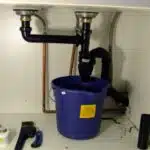


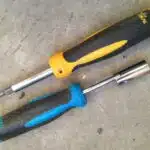



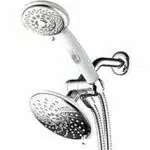

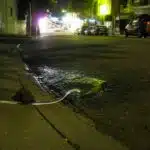


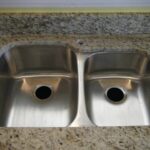
![How To Replace A Bathtub Drain In A Mobile Home 24 2/365 [Bathtub Drain]](https://green-life.blog/wp-content/uploads/2023/05/3ft8KAJsNnjq-150x150.jpg.webp)
